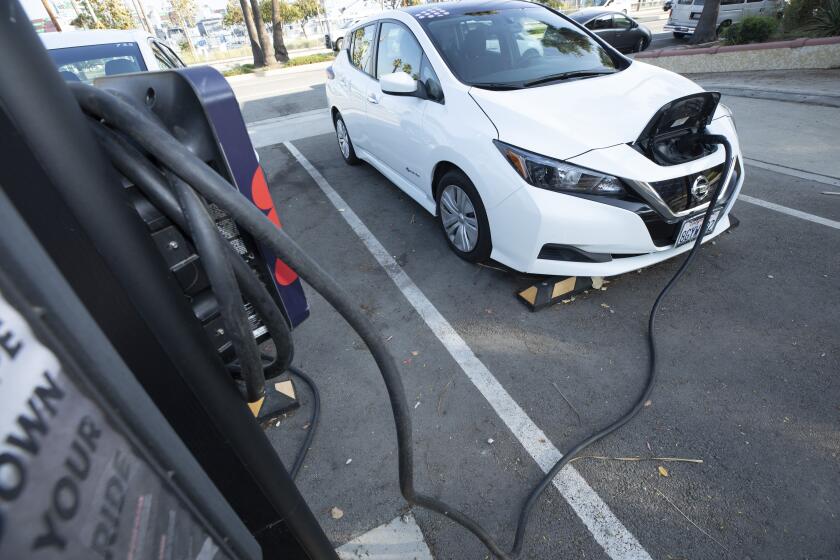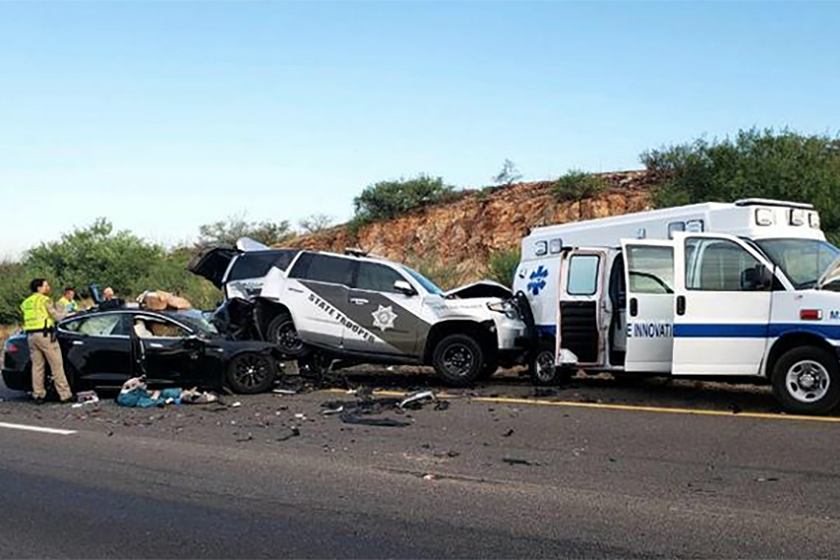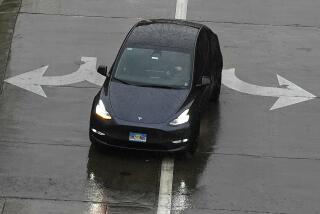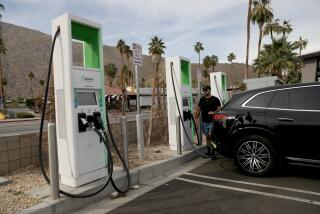Inflation won’t stop 2023 auto sales growth amid chip recovery
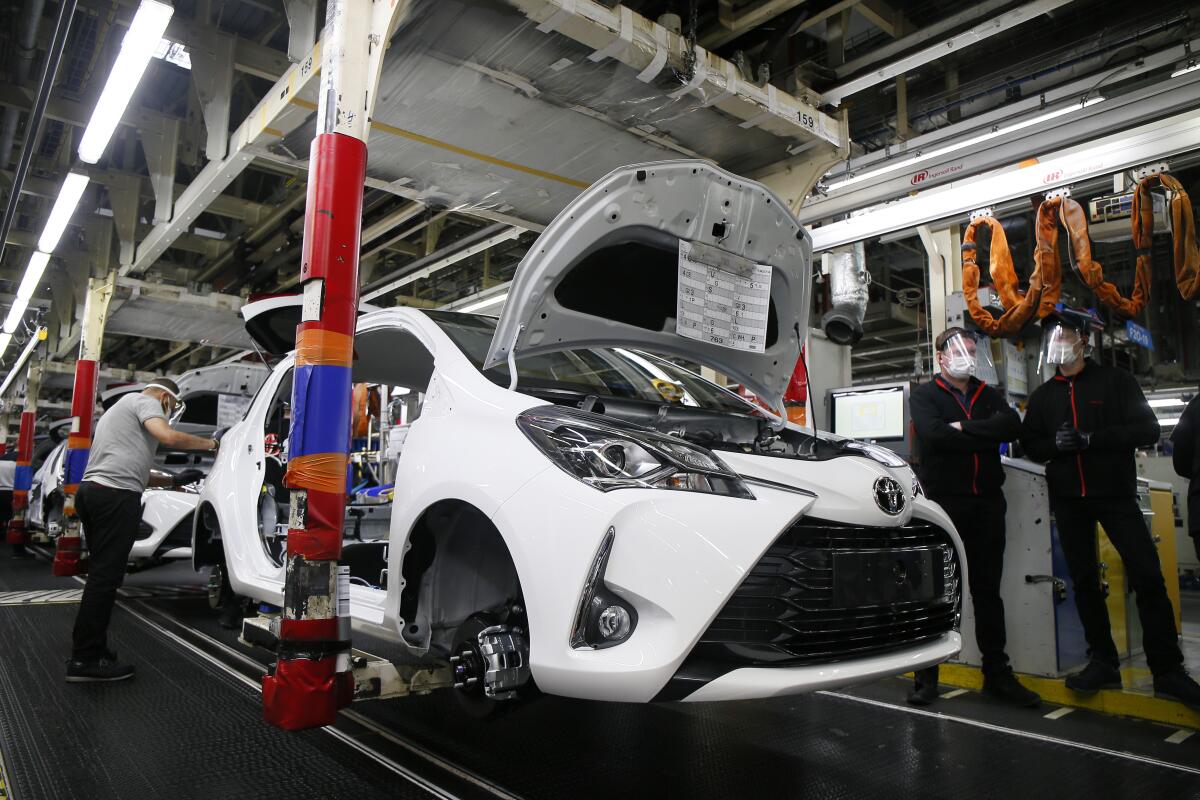
U.S. auto sales probably rose in December and will rebound in the new year as a recovery in vehicle production will more than offset the effects of inflation and rising interest rates.
Two years of semiconductor shortages and supply problems have kept vehicle production low and inventories lean. With factories picking up pace again, consumers will buy more vehicles this year even if automakers have to help them manage rising interest rates by cutting today’s lofty prices.
“We are still seeing strong demand for our vehicles, but we’re mindful because the steady rise of average transaction prices is starting to come back a little,” General Motors Chief Executive Mary Barra said at an Automotive Press Assn. event in December.
The net effect is that the U.S. auto industry is expected to grow by more than 1 million vehicles in 2023 to about 15 million units. That’s below recent years, when automakers enjoyed sales of 16 million to 17 million vehicles, but signals that the industry can weather this year’s expected economic stress.
“We’re planning for an industry around 15 million,” Barra said, “but having contingency planning plus or minus off of that.”
Hoping to ban sales of new internal combustion vehicles by 2035, the California Air Resources Board proposes requiring that EV sales triple by 2026.
Retail sales of new cars in December probably rose 4% from a year earlier to 1.27 million as inventories continued to improve, according to researcher Cox Automotive. Still, that’s short of the typical 1.5 million units seen in December, when carmakers push year-end sales campaigns to hit annual targets.
Total sales for 2022 probably were below 14 million units, the lowest since 2011, when the U.S. was climbing out of the depths of the Great Recession.
Pent-up Demand
Inflation and interest rates are squeezing some shoppers out of the new-car market and pushing up auto-loan defaults. Meanwhile used-car prices, which determine the trade-in values that many consumers use as currency when buying a new car, are falling.
That won’t deter many new-car buyers, said Jack Hollis, Toyota Motor Corp.’s executive vice president of sales for North America. He said that vehicle shortages of the last two years have kept between 4 million and 7 million consumers from buying, and many could be back in showrooms this year.
Around the same time that Tesla stopped self-reporting Autopilot safety stats, its crash rates were soaring far higher than those of its competitors.
“It’s clear that demand is still outstripping supply,” Hollis said in an interview last month. “Prices keep rising. We will have another year with a supply-constrained sales number.”
Hollis is betting that the industry will reach 15 million vehicles this year and could sell as many as 17 million if it weren’t for supply chain issues.
Carmakers probably sold new cars at an annual pace of 13.3 million in December, up 7.3% from a year earlier, according to the average forecast of six market researchers. Most automakers will report their latest quarterly and annual U.S. new car sales Jan. 4.
GM, Hyundai and Toyota probably saw big sales gains in December, while deliveries at Ford, Stellantis, Honda and Nissan dropped versus a year earlier, said Joseph Spak, an analyst at RBC Capital Markets.
Although two years of tight inventory may create a floor for demand in 2023, carmakers’ days of minting money on a small volume of vehicles at inflated prices may be waning.
Tesla this week reported record deliveries but missed analysts’ estimates for the fourth quarter and came up short of its own targeted growth rate of 50% despite dropping prices.
Scott Kunes, chief operating officer of Kunes Country Auto Group, which sells brands from all three Detroit automakers and a host of imports at 43 dealerships across the Midwest, said December was weaker than usual because manufacturers were tight-fisted with incentives.
“Everybody was used to the new normal, pandemic normal where incentives weren’t there because demand was so high and supply was so short,” Kunes said by phone. “We see this abrupt slowdown in demand — I didn’t think it would happen quickly, but the Fed raised rates as much as they have and consumer confidence is pretty down right now.”
The industry’s shift toward building high-margin trucks and SUVs has shrunk the pool of buyers who can afford a new car, he said. Prices are dropping on high-end vehicles, while demand for entry-level cars in the used market is still hot.
Warning Signs
Researcher Evercore ISI expects to see “pricing levers pulled for the first time in two years” in 2023, with sticker prices coming down $1,500 to $2,000 per car, according to a Dec. 23 research note. Dealers will first have to halt their mark-ups before automakers’ profit margins will be affected, the analysts wrote.
One bright spot this year will be fleet sales, thanks to the Inflation Reduction Act. President Biden’s sweeping climate bill grants a $7,500 tax break for electric work trucks, rental cars and delivery vans.
The CEOs of Ford, GM and Rivian have all crowed about their expectation for robust commercial vehicle sales as businesses and local governments seek to take advantage of the EV subsidy.
That will mark a reversal of the last two years, when chip scarcity forced automakers to curb their fleet sales to prioritize more profitable retail customers.
More to Read
Inside the business of entertainment
The Wide Shot brings you news, analysis and insights on everything from streaming wars to production — and what it all means for the future.
You may occasionally receive promotional content from the Los Angeles Times.
